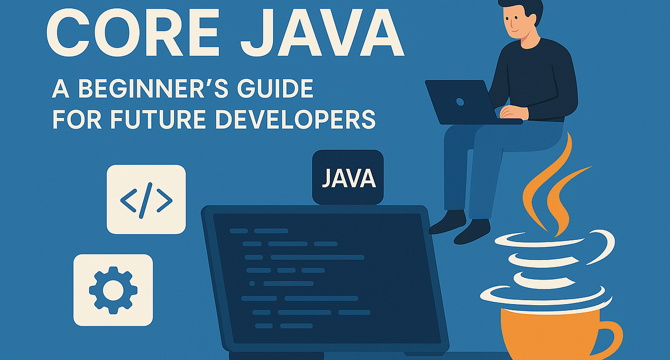Programming News
Dev
236

Image Credit: Dev
C# HTML to PDF: DinkToPdf Alternatives Using IronPDF
- Developers in C# have options like DinkToPdf and IronPDF for converting HTML to PDF, each with its strengths.
- DinkToPdf is an open-source .NET wrapper for wkhtmltopdf, suitable for lightweight solutions with some limitations.
- IronPDF is a commercial library for .NET using a Chromium-based browser, offering advanced features and reliable support.
- DinkToPdf requires manual setup of native binaries, while IronPDF is easier to integrate with no external dependencies.
- IronPDF supports cross-platform deployment and modern applications, unlike DinkToPdf, which is more Windows-centric.
- IronPDF provides broader features like PDF manipulation, JavaScript execution, and advanced capabilities compared to DinkToPdf.
- Performance-wise, IronPDF outperforms DinkToPdf in stability and output consistency, especially under high load.
- While DinkToPdf is free under the MIT License, IronPDF offers superior support and advanced features at a cost after the trial period.
- IronPDF's simplicity and performance shine in code examples, emphasizing its benefits over DinkToPdf for professional applications.
- Ultimately, IronPDF is recommended for enterprise-grade projects, while DinkToPdf suits smaller endeavors needing a cost-effective solution.
Read Full Article
14 Likes
Medium
48

Image Credit: Medium
What is Core Java? A Beginner’s Guide for Future Developers
- Core Java is the fundamental part of the Java programming language, consisting of basic concepts like variables, loops, OOP, exception handling, threads, I/O operations, and JVM basics.
- Core Java is versatile and used in various fields such as web applications, mobile applications, back-end applications, and automation.
- Java is popular with over 9 million developers worldwide, used by major brands like Amazon, Netflix, and Google, ranking high in TIOBE Index, and being part of many engineering college syllabuses.
- Java helps in problem-solving skills development and computerized thought process improvement.
- Core Java is the foundation for Android apps and is vital for beginners entering the software industry.
- NareshIT offers Core Java courses focusing on visual, structured, hands-on, and mentored learning approaches with certification, interview preparation modules, and recorded sessions.
- Core Java Training at NareshIT is comprehensive, spanning basic to advanced levels, suitable for beginners and those aiming to excel in Java development for web applications.
- Learning Core Java opens up numerous opportunities in the software industry, enabling app development, testing, and coding exploration.
Read Full Article
2 Likes
Medium
440

Day #2: Patterns, Paninis, and Perseverance
- The writer struggled with understanding and implementing patterns initially, feeling frustrated and demoralized.
- Realized the importance of accepting weaknesses and the slow learning process.
- Decided to focus on understanding one pattern at a time rather than finishing everything.
- After 2 hours of effort, successfully completed Pattern 8, feeling a sense of accomplishment.
- Celebrated the progress by making a Panini sandwich and emphasized the importance of recognizing and celebrating milestones.
- Shared a tip for others experiencing similar challenges: use a notebook to write down logic before coding.
- Encouraged self-care and recognition of personal achievements.
- Plans to continue understanding and implementing more patterns in the future.
Read Full Article
26 Likes
Medium
423
Image Credit: Medium
How to Build a Dynamic Fibonacci Forecast Tool in Pine Script (The Clean Way)
- The article discusses how to build a dynamic Fibonacci forecast tool in Pine Script for creating relevant and precise Fibonacci levels.
- Using persistent variables like var in Pine Script helps in creating accurate projections based on recent market structures.
- Clear definition of structure conditions is crucial for creating Fibonacci projections with clear anchors that evolve as price changes.
- Fibonacci zones are not static but shift with changes in swing highs and lows, ensuring up-to-date levels.
- Plotting these dynamic Fibonacci zones only when a valid swing exists helps in controlling clutter and confusion on the chart.
- Adding logic to track shifts in Fibonacci levels and setting up alerts for when zones are touched enhances the tool's usability in trade workflow.
- The goal is to highlight context with Fibonacci levels as zones, not overwhelm with unnecessary complexity.
- The guide is designed as a jump-start kit for building a practical Fibonacci forecast tool.
Read Full Article
25 Likes
Discover more
- Software News
- Web Design
- Devops News
- Open Source News
- Databases
- Cloud News
- Product Management News
- Operating Systems News
- Agile Methodology News
- Computer Engineering
- Startup News
- Cryptocurrency News
- Technology News
- Blockchain News
- Data Science News
- AR News
- Apple News
- Cyber Security News
- Leadership News
- Gaming News
- Automobiles News
Medium
227

Setting Up SSH Keys for GitHub
- SSH keys are a secure way to log into a remote system without using a password, consisting of a public and private key pair.
- When using Git over HTTPS, GitHub requires your username and password, unless you use a credential manager.
- Setting up SSH keys eliminates the need to enter your GitHub credentials each time you interact with a repository.
- SSH authentication is more secure and convenient compared to using passwords or tokens in the long run.
- SSH keys are preferred over tokens as they ensure a secure key stored only on your device without sensitive information being sent over the internet.
- SSH keys provide enhanced security, ease of automation, and do not require frequent renewal.
- The process of setting up SSH keys involves checking for existing keys in the terminal or Git Bash.
- If SSH keys are not found, additional steps need to be taken to generate them.
- The article provides detailed steps for setting up SSH keys for GitHub, offering a practical guide for users.
- For a more in-depth understanding of the topic, readers can refer to the full blog post on the website.
- Readers are encouraged to stay updated on tech insights by following the website on LinkedIn.
Read Full Article
13 Likes
Dev
298

Image Credit: Dev
🇮🇳 Introducing Hind Runtime: The Desi Interpreter for Hinglish Scripts (.hl)
- Hind Runtime is the desi interpreter for Hinglish scripts written in .hl format.
- It uses Hindi-English syntax like agar, ghoom, likho for scripting.
- The interpreter is designed for performance and simplicity.
- Hind allows running Hinglish code quickly on various platforms.
- Features include Hindi-English syntax, Go-powered for speed, terminal-first design, and cross-platform support.
- Installation is simplified with a one-liner setup command for quick start.
- It also offers manual installation options for specific environments like Replit and Termux.
- Key features include Hindi-style keywords, loops, conditionals, functions, and built-in modules like DOM and DateTime.
- Hind supports async/await, API fetch, and CLI-first approach with web UI integration.
- Users can build Hind from source for customization and installation.
- Contributions to the project are welcomed via GitHub.
- Hind Runtime aims to provide a playful and local-language-based approach to programming for beginners and enthusiasts.
- Users are encouraged to explore and build using Hind Runtime.
- Full documentation including live docs, PDF version, and source code is available.
- The project is open for contributions via GitHub.
Read Full Article
17 Likes
Dev
35

Image Credit: Dev
My Journey with the Hyperlane Framework From Getting Started to Performance Optimization
- A junior computer science student shares their experience with the Hyperlane framework, starting from learning to performance optimization.
- Hyperlane's clean Context (ctx) abstraction simplifies code readability by eliminating nested method calls.
- Request handling in Hyperlane is made easy with flexible method macros for routing RESTful APIs.
- Response handling in Hyperlane is intuitive, allowing setting response status, headers, and sending responses in chunks.
- The middleware onion model in Hyperlane separates concerns like authentication from business logic efficiently.
- Dynamic routing in Hyperlane allows for static and dynamic routes with straightforward parameter retrieval.
- Hyperlane shows impressive performance in a QPS test, ranking second only to the native Tokio implementation.
- Key learning takeaways include clean API design, extensibility with the middleware model, and the importance of asynchronous programming for high performance.
- Future plans involve exploring WebSocket support, leveraging Rust's abstractions, and building a microservices architecture with Hyperlane.
- Hyperlane's impact goes beyond being a tool, transforming the author's approach to programming and highlighting the Rust ecosystem's performance and development balance.
Read Full Article
2 Likes
Medium
378
Image Credit: Medium
Cursor CEO: Replace coding entirely. What’s left for programmers?
- Michael Tru, CEO of Cursor, aims to replace traditional programming with a more efficient approach.
- Cursor, a fast-growing AI programming company, has achieved significant success within a short period.
- The company boasts over $100 million in annual recurring revenue and a valuation of $9 billion.
- Michael Tru shared his vision for the present and future of AI programming in a recent interview.
- Tru's perspective on AI programming leans towards rapid construction without the need for extensive lines of code.
- He criticizes the current practice of implementing simple ideas through complex and lengthy code.
- Tru predicts the emergence of a new, higher-level, and more efficient software development approach in the next 5 to 10 years.
Read Full Article
22 Likes
Medium
8

Image Credit: Medium
Runnit.Fun: The Fastest Growing On-Chain Gambling Game on Solana With $400,000 Paid in 32 Hours
- Runnit.Fun is a new on-chain gambling game on Solana offering five mini-games for players to bet real SOL against algorithmic odds.
- Within just 32 hours of launch, Runnit.Fun attracted 800+ active users and paid out over $400,000 in SOL.
- Runnit.Fun offers games like Crash, where players cash out before it crashes, Jackpot for pooling wagers, Mines to find gems and avoid bombs, and Plinko for a chance-based win.
- Players can win big by pulling out at the right moment in Crash, joining a live pool in Jackpot, collecting gems in Mines, or landing on prize slots in Plinko.
- The game is designed for degen gamblers and Solana enthusiasts, providing a fast-paced and rewarding gambling experience.
- Runnit.Fun has rapidly paid out substantial amounts in SOL, proving its popularity and potential for users to earn rewards quickly.
Read Full Article
Like
Dev
244

Image Credit: Dev
How to Structure a React Project in 2025: Clean, Scalable, and Practical
- Organizing a React project involves thinking about the app's size and complexity; suggested structure includes folders for assets, components, pages, routes, hooks, services, utils, contexts, and styles.
- The 'assets' folder houses static files; 'components' contain shared UI components; 'pages' for route-level components; 'hooks' for custom hooks; 'services' for external API logic; 'utils' for utility functions; 'contexts' for React Context Providers; and 'styles' for global styling.
- Additionally, 'App.jsx' serves as the main application shell, and 'main.jsx' is the root file for rendering React to the DOM.
- As projects grow, transitioning to a feature-sliced or domain-driven structure is recommended for scalability and organization.
- Planning project structure early is crucial for maintainable code; start small, organize by features, and evolve into a modular, domain-based architecture for readability and scalability.
Read Full Article
14 Likes
Medium
271

Image Credit: Medium
Who Says Web Design Doesn’t Have a Future?
- Web design is evolving into something smarter, deeper, and more impactful.
- AI tools like Wix ADI, Framer AI, and ChatGPT can quickly create landing pages.
- AI lacks understanding of client's brand story, user emotions, and business goals.
- Designers play a crucial role in adding character and personal touch to designs.
- AI is viewed as a tool by most Redditors and not a replacement for human designers.
- Web design requires creativity and human intuition which AI may lack.
- Many agree that AI complements but doesn't replace the role of human designers.
- The role of web designers involves adding unique elements to design based on context.
- Designers are seen as chefs who know how to enhance designs with creativity.
- AI is likened to a blender that can mix ingredients, whereas designers are chefs who add unique flavors.
- AI excels at creating standard designs, but designers bring innovation and creativity.
- Importance of human designers in understanding nuances and subtleties crucial for effective web design.
- Designers have the ability to make design choices based on emotions and business objectives.
- Web design involves more than just aesthetic appeal; it includes storytelling and brand representation.
- The field of web design is thriving as it adapts to new technologies and demands.
- Web design continues to be relevant and essential in shaping digital experiences.
Read Full Article
16 Likes
Dev
66

Image Credit: Dev
What are MCP Servers? | A Detailed Guide
- The Model Context Protocol (MCP) is an open-source, vendor-agnostic standard created by Anthropic in November 2024.
- MCP serves as a universal connector between large language models (LLMs) and external data sources or tools.
- It aims to standardize how LLMs request, retrieve, and manipulate external data using a uniform protocol.
- MCP employs a client-server model with MCP Hosts, MCP Clients, and MCP Servers as its core components.
- The workflow involves the user asking AI to fetch data, the host spinning up an MCP client, and the client making a standardized JSON‑RPC call to the MCP server.
- MCP adoption is growing, with various organizations leveraging it for tool integrations and workflows.
- Use cases include IDE assistants pulling live code context from GitHub and enterprise agents querying internal databases.
- Pros of MCP include unified integrations, vendor-agnosticism, scalability, and security-by-design.
- Challenges include security vulnerabilities, governance gaps, and potential market incentives issues.
- Future outlook for MCP includes broader adoption, enhanced security layers, and advanced tooling.
- MCP aims to enable context-aware agentic AI by standardizing interactions between LLMs and external tools.
- Security, governance, and ethical design are crucial for the safe scaling of MCP in intelligent applications.
- MCP could play a key role in the future of applications bridging human intent and digital systems.
Read Full Article
4 Likes
Dev
106

Image Credit: Dev
How to Create an Offline Version of Websites Using Kiwix and ZIM Files
- Kiwix and ZIM files allow offline access to web content, useful for trips or areas with no connectivity.
- Kiwix is free software enabling offline web content access, compatible with various platforms.
- ZIM files are compressed formats storing web content for offline usage, including images and videos.
- Getting started involves installing Kiwix, downloading ZIM files from the library, and opening them in Kiwix.
- Users can create their ZIM files using Zimit for websites not in the Kiwix library.
- Benefits include offline access to educational content, faster browsing, and preservation of resources.
- Use cases include students in low-connectivity areas, travelers needing offline materials, and researchers archiving knowledge.
- Final thoughts emphasize the utility of Kiwix and ZIM files for offline browsing and resource preservation.
- Kiwix empowers users to access the web without an internet connection by creating offline versions of websites.
- Users can share their experiences with using Kiwix and ZIM files in the comments or on social media.
- Platforms supported by Kiwix include Windows, macOS, Linux, Android, and iOS.
- ZIM files offer compressed and fast-loading offline content with the full website structure.
- Creating a ZIM file involves pasting a website's URL on Zimit, generating the file, and opening it in Kiwix.
- Note that not all websites are easily portable to ZIM format, especially those with login systems or heavy JavaScript usage.
- Downloading Kiwix enables users to build their offline knowledge base, useful for various situations, such as travel or study.
- The guide provides steps to begin using Kiwix and ZIM files for offline web content access.
Read Full Article
6 Likes
Dev
196

Image Credit: Dev
Web Performance Optimization in 2025: Build a Site Faster Than a Rocket!
- In 2025, website speed is crucial, with 53% of users leaving if a site takes over 3 seconds to load.
- Google uses Core Web Vitals like LCP, INP, and CLS to judge user experience and SEO rankings.
- Optimization techniques include image optimization using WebP or AVIF, server speed improvements, clean code practices, responsive design, AI utilization, and focusing on Core Web Vitals.
- Addressing server speed with quality hosting and CDNs like Cloudflare can significantly enhance site performance.
- Clean coding practices such as minifying, removing unused code, and loading scripts asynchronously are recommended.
- Designing responsively for mobile, optimizing fonts, and conducting cross-device testing are crucial for mobile optimization.
- AI offers tools for user behavior analysis, automated optimization, and predictive alerts for web performance enhancement.
- Improving Core Web Vitals metrics, including LCP, INP, and CLS, is fundamental for SEO success in 2025.
- Google emphasizes Core Web Vitals for SEO; strategies to enhance these metrics involve optimizing images, JavaScript, and preventing layout shifts.
- By implementing these techniques, websites can achieve faster loading speeds, better user experience, and higher search rankings.
- Overall, web performance optimization in 2025 is critical for retaining users, increasing revenue, and improving search engine rankings.
Read Full Article
11 Likes
Dev
279

Image Credit: Dev
Building Africa’s AI Future: Yamify’s Vision for Education and Infrastructure
- Africa's potential in the global AI revolution hinges on education and infrastructure according to Yamify.
- Yamify addresses the gap by offering immersive and localized AI education.
- Their approach includes AI Sandboxes, localized learning, and problem-driven curriculum.
- Infrastructure is crucial for AI development, with Africa having limited cloud capacity.
- Yamify's AI-native cloud platform provides GPU compute at local rates and data centers in Africa.
- Empowering learners and providing infrastructure leads to faster innovation in AI products.
- Yamify calls for partnerships to drive Africa's AI future through locally trained developers.
Read Full Article
16 Likes
For uninterrupted reading, download the app